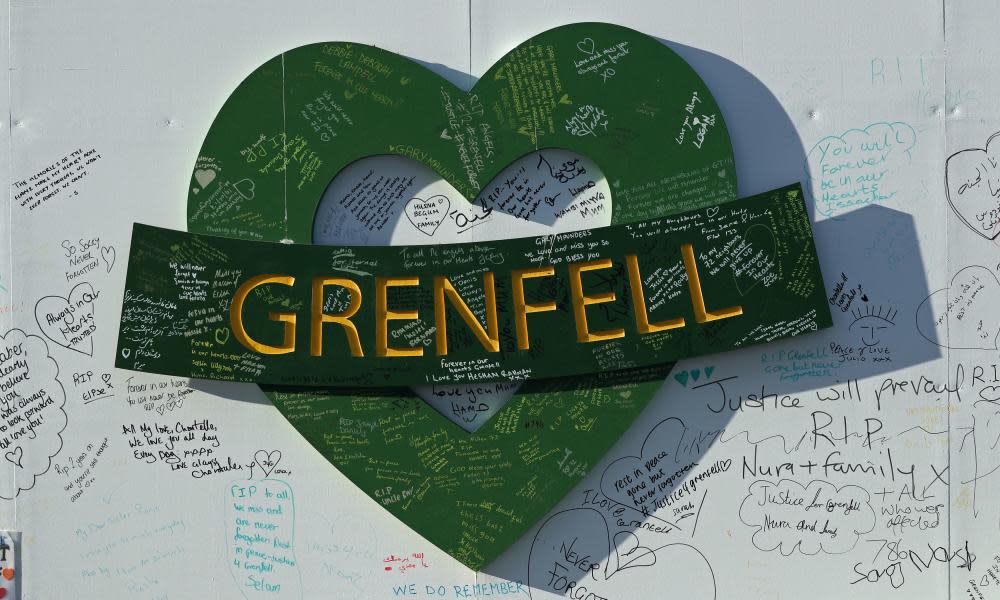Grenfell inquiry to restart with statements from private firms

The companies which wrapped Grenfell Tower in combustible cladding will finally face public scrutiny when the inquiry into the loss of 72 lives restarts this week.
About 200,000 unseen documents, from private emails to phone transcripts and commercial agreements, will be released during 18 months of hearings examining decisions taken in the months and years before the fire, its immediate aftermath and the role of the UK government. Some of the evidence are expected to contain explosive revelations.
But the inquiry chairman, Sir Martin Moore-Bick, faces a difficult challenge to keep the process on track. A conflict of interest row, which forced the resignation of an inquiry panellist over links to the firm that made the combustible cladding, has strained community trust to breaking point.
Benita Mehra resigned on Saturday evening, admitting to “a regrettable oversight”. Neither she, nor the Cabinet Office had considered the fact that her being president of a charity that received a £71,000 grant from the Arconic Foundation – the cladding manufacturer’s philanthropic arm – was a conflict of interest. It took 10 days from the Guardian report revealing the link for Boris Johnson to announce her resignation. In the meantime community confidence in the inquiry plummeted, with some of the bereaved and survivors considering withdrawing cooperation and planning to disrupt hearings.
“The report from the first phase of the inquiry [which found Arconic’s cladding was the main source of fire spread and broke building regulations] restored a little bit of confidence,” said Karim Mussilhy, the vice-chair of Grenfell United. “This has taken us 10 steps backwards.”
There also are fears that with possible criminal charges looming and live civil lawsuits claiming huge damages, the inquiry could descend into a “blame game” among the corporates.
The second phase will open with statements from lawyers for the architects, Studio E, the builders, Rydon and Harley Facades, Celotex, which made the combustible insulation, and Arconic. They will be followed by the tower’s owner and manager at the time of the fire, the Royal Borough of Kensington and Chelsea (RBKC) and the Kensington and Chelsea Tenant Management Organisation (KCTMO).
Related: Grenfell survivors consider boycotting inquiry over conflict of interest
“The private companies are pointing the finger at each other and the direction the inquiry takes could make people angry,” said one participant. He said parties were “splitting hairs” as they sought to avoid admissions of civil or criminal liability by assigning responsibility to others.
“No one is going to say, ‘hands up [it was our fault]’,” said another.
The inquiry has so far cost more than £40m in public money, but the legal bills in the second phase are expected to be higher. The inquiry is not set up to establish liability, rather to examine and make recommendations to government. But companies and the insurance firms funding their legal teams are unlikely to make easy concessions given the looming threat of other actions.
“This is an argument between the insurance companies,” said one participant.
Arconic and Celotex are facing civil litigation from the bereaved in US courts which lawyers said could result in a payout worth hundreds of millions of dollars. In the UK, the Metropolitan police are investigating possible manslaughter and corporate manslaughter charges, and have already conducted at least 13 interviews under caution. Detectives will wait until the conclusion of the public inquiry before deciding whether to send evidence to the Crown Prosecution Service to bring charges. There is also the potential for civil litigation in the UK.
Yet Moore-Bick must find a way to deliver for survivors and the bereaved who remain hungry for answers. It is two years, seven months and 13 days since the fire and finally the inquiry will examine, in Moore-Bick’s words, “the decisions which led to the installation of a highly combustible cladding system on a highrise residential building and the wider background against which they were taken”.
Mussilhy, whose uncle Hesham Rahman died awaiting rescue on the 20th floor, said: “The cladding was being talked about from the morning of the fire and finally it will be coming out in the public inquiry. But I am very keen to see the leaders of the council and the TMO and Rydon and Harley [Facades] and Celotex and Arconic and also government ministers [held to account].”
A vivid picture of the build up to a the worst loss of life in London since the blitz is likely to emerge. Witnesses will range from builders who worked on site, potentially all the way up the former prime minister Theresa May. The inquiry room in Paddington, west London, is expected to be packed for the cross-examination of Rock Feilding-Mellen, a former deputy leader of RBKC who was the political sponsor of the refurbishment project.
Feilding-Mellen has not spoken publicly since he resigned a fortnight after the disaster. Leaked emails from the project team have already shown that officials felt under pressure to deliver “good costs for Cllr Feilding-Mellen” and subsequently proposed to swap fire-resistant cladding for cheaper aluminium panels to save £293,368.
More than 90,000 documents have already been circulated to the core participants, including 560 bereaved, relatives and survivors and 20 construction companies. The Guardian understands some of the documents shed light on complex agreements that led to the use of combustible rather than safer non-combustible panels. Others are expected to focus on the failure of the RBKC to conduct proper building regulations checks. Building control officers from the council carried out 16 separate visits to check on works, but still approved them.
The council’s leader, Elizabeth Campbell, last week admitted for the first time “failings in respect to building control” and said: “We will not shirk our responsibilities. If we have done something wrong, we will say so.
“There is a stark reality we face. Seventy-two people died. This council could have, and should have, done more to stop it happening.”

 Yahoo News
Yahoo News 
